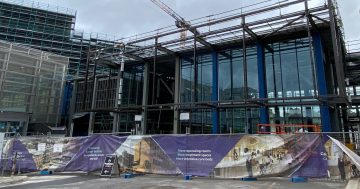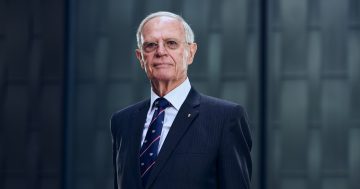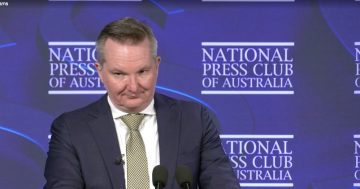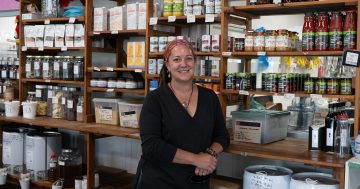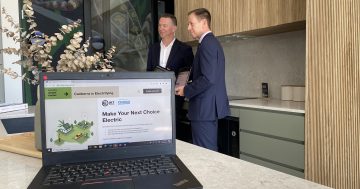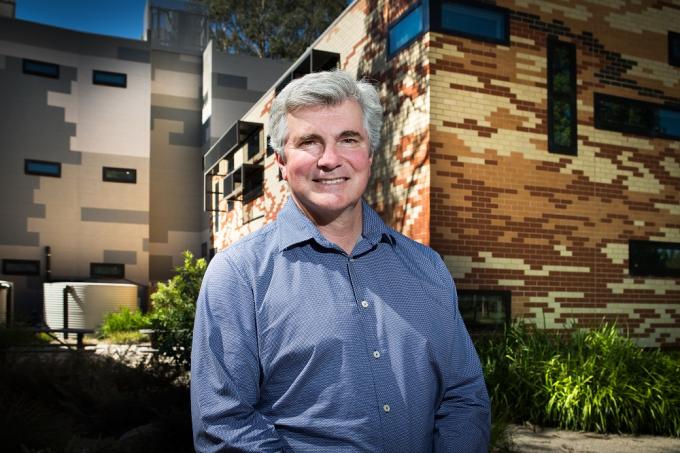
Professor Mark Howden remains optimistic and believes the ACT is a global leader in dealing with the threat of greenhouse gas emissions and climate change. Photo: ANU.
With the 100 per cent renewable electricity goal in sight, one of the Territory’s new Climate Councillors expects the ACT Government to go ‘hard and fast’ on transforming transport, as well as looking at changing the way we heat and cool our buildings, in the next drive to reduce the Territory’s greenhouse gas emissions.
Director of the Australian National University (ANU) Climate Change Institute, Professor Mark Howden, a 30-year veteran in this area, is one of four new members of the ACT Climate Council, which advises the Minister for Climate Change and Sustainability on matters relating to reducing greenhouse gas emissions as well as building resilience and adapting to climate change.
Prof Howden remains optimistic despite the frustration that not enough is being done to avert costly damage to the environment and the economy.
He also believes that despite being a small jurisdiction the ACT is showing the way forward for others on how to deal with the threat of climate change, but sounds a warning about the challenges of building and maintaining the green infrastructure to mitigate rising temperatures.
“The ACT by showing leadership has actually opened up pathways for not only other jurisdictions in Australia, like Victoria, but also globally, so we’re seen as a global leader in terms of how to decarbonise and move away from fossil fuel dependence. Our leadership gives us huge leverage,” he says.
The 2020 electricity milestone opens up avenues to reduce emissions in other sectors such as transport – which will become the biggest emitter – housing and commercial buildings.
Prof Howden says extending light rail, moving to electric buses and cars, and enabling the use of alternative transport such as e-scooters will all help to rein in emissions.

Extending light rail will reduce transport emissions.
He says technology such as electric buses using fast-charge systems at stops, will enable an integrated transport system using renewable energy sources. The Government is in the process of procuring new buses that are preferably zero or low emission vehicles.
He believes the ACT’s size is ideal for electric car ownership and the establishment of a charging network, which the Government is encouraging through converting the Government car fleet and requiring charging infrastructure.
“The ACT is great for that because it’s manageable in terms of distance. Even the oldest electric batteries, with a range of 180 to 200 kilometres, is plenty to get through the daily commute for a couple of days before having to recharge,” he says.
He believes government has a role to play in ‘kicking people into the transition’ with incentives such as reducing tariffs on electric cars and providing dedicated car parks with chargers.
“Because our systems are so heavily embedded we do need some sort of government intervention to initially start moving things into the new direction,” Prof Howden says.
He says the best way to achieve rapid change is to provide convenient, cheap and greenhouse-gas-friendly alternatives, something the Europeans are appreciating.
In the building and housing industry, there is work to do adapting existing structures for climate change and planning properly for new ones, as well as grappling with the equity issues posed by rental properties.
Switching from expensive gas to all-electric systems makes economic sense, especially with efficient modern heat pump systems.
“That’s where people will end up, particularly when we can have renewable electricity at reasonable prices compared to gas,” Prof Howden says.
He says there are lots of relatively cheap things people can do to make their houses warmer in winter and cooler in summer but it doesn’t actually translate to the actions of landlords.
“It’s an area where some really significant policy thinking has to happen,” he says. “It’s a big issue, particularly as a lot of renters have trouble making ends meets so their options are quite limited.”
“A house that’s built now could well be around in 100 years’ time when it could be a very different climate,” he says. “We need to be planning ahead, not just building for the climate now, or, the climate we’ve experienced over the past several decades.”

Green infrastructure such as this requires a secure water supply. Photo: From the Strategy.
That requires bringing along a conservative building industry to adopt cutting-edge design and technology.
Canberrans’ fears of the city turning into a concrete jungle and generating heat islands were well founded but it isn’t simply a matter of planting more trees.
Prof Howden says our buildings need their own green infrastructure to biologically help cool the built environment, such as those in Singapore, but it can’t be done without water, noting that the ACT’s dam levels are at about 50 per cent.
“You can’t have trees without water, you can’t have hanging vines on buildings without water,” he says. “So if we want to have a green city which is a cool city then we also need to have water available for that city.
“With an increasing population and increasing demand as a function of climate change we have to be pretty careful about how much water we think we’re going to have.”
He says the ACT should be looking at available technologies, such as permeable pavements to prevent water run-off, and start applying them.
“There’s also the cost-effectiveness element. Water is expensive, we pay $5000 per megalitre in Canberra. You don’t want to waste it, same with electricity,” he says.
Prof Howden says the ACT and the world are tracking towards quite a significant climate change but the effects are already being felt.
“We take for granted that we can just go out and do things but increasingly we’re seeing climate impacting on people, their preferences and activities,” he says. “A lot of people have said to me last summer, ‘I just don’t want to go out in the middle of the day, I’ll go and do stuff in the morning and I’ll just bunker down in the middle of the day and then go back out in the evening.”
He believes in the long term the world will come to grips with climate change but not without incurring damage and unnecessary costs.
But it also brings almost endless opportunities for business and to push for more sustainable, and more livable, cities as a result.
“Rather than doom and gloom I usually take a fairly optimistic view, it’s frustrating but we actually have lots of possibilities here,” Prof Howden says.
The ACT Climate Council is chaired by Professor Penny Sackett and includes Prof Howden; energy efficiency expert Dr Paul Bannister, local entrepreneur Sophia Hamblin Wang; Community Development Manager with Communities@Work, Karen Jesson; Associate Professor of Natural Resource Measurement and Management in The Fenner School of Environment and Society at the ANU; Dr Cris Brack; and Director-General of the ACT’s Environment, Planning and Sustainable Development Directorate, Ben Ponton. The Council meets at least four times each year.














